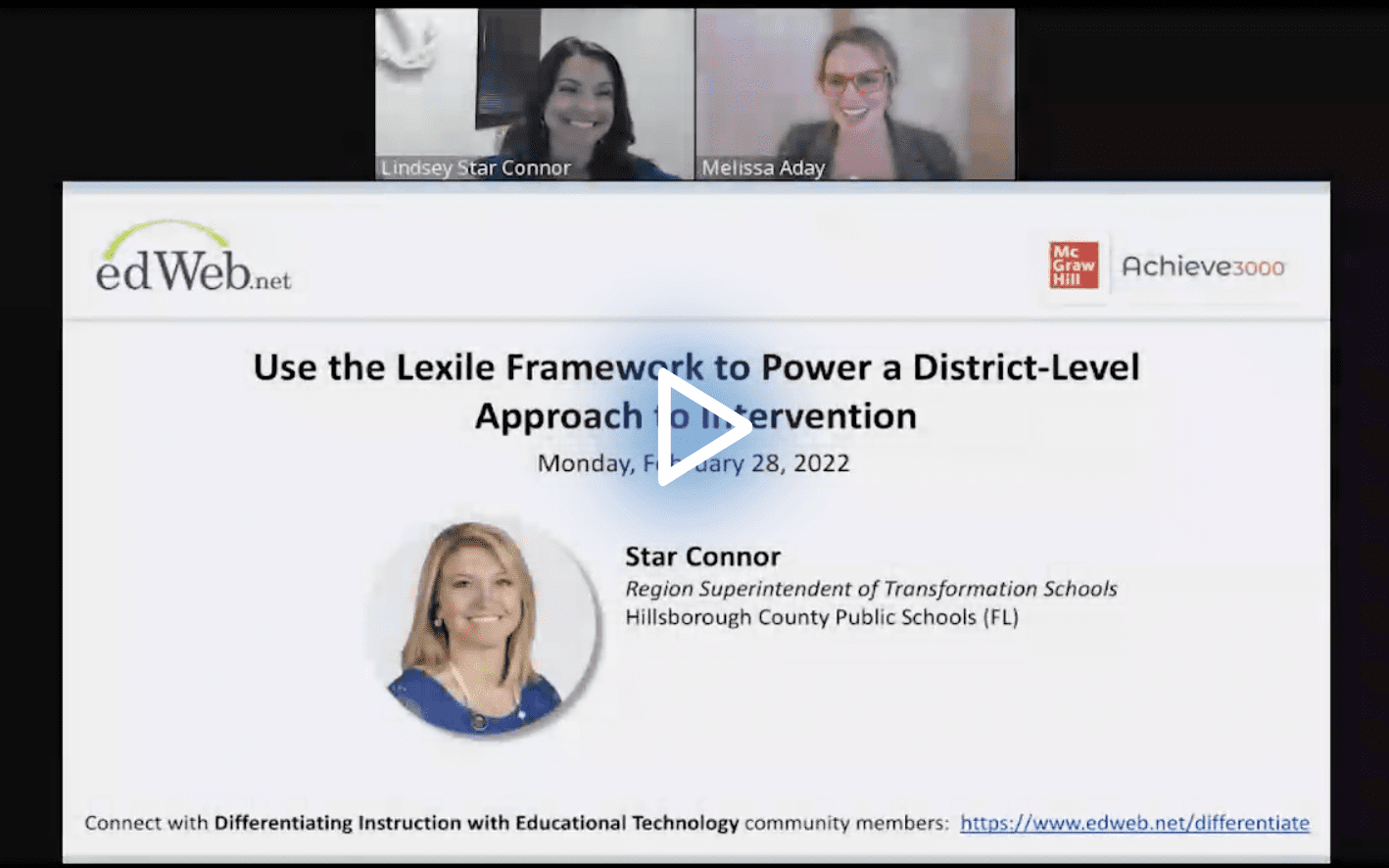A Four-Step System for Improving Literacy
Watch the Recording Listen to the Podcast
If schools are truly preparing all students for college and career readiness, then strong reading and literacy skills are a must. Star Connor, Region Superintendent of Transformation Schools in Hillsborough County Public Schools (FL), believes that all children can become proficient, but it takes continual planning and goal setting for each individual.
During the edLeader Panel, “Use the Lexile Framework to Power a District-Level Approach to Intervention,” she shared her four-step system that helped more than 60% of the lowest-performing schools in her district move up at least one letter grade on Florida’s school rating scale over the course of a single school year.
Step 1: Plan
This is when administrators should look at the big picture as to how they are going to improve literacy and create a realistic plan for how they’ll reach their goals. In Connor’s district, this begins with summer planning sessions where principals and teachers are trained on the expectations for the coming school year. Then, she marks several important checkpoints to see how the schools are doing overall. For instance, by October students should pass at least one article at 75% on the first try. By February, they should be passing two articles a week.
In addition, teachers should be developing individual plans for students based on their levels set in September. Students should be challenged based on their current abilities, but the expectation is high quality and quantity for all students.
Step 2: Set Realistic Goals
Again, the specific goals should be based on students’ needs—whether it’s how many Lexile points they jump throughout the school year, the number of articles they read, the type, etc. The key here is to get students invested in the goals. The students in Connor’s district work with teachers to set the goals; they also learn how to monitor their own progress.
Step 3: Monitor Progress
First, of course, the teachers are monitoring their individual students, but here, they must do it weekly. They must check in with every student to see how they’re doing compared to their goals, and if they won’t meet the goal for the week, come up with a plan to help the student reach it. Teachers can come up with their own assessment sheets and personalize them for their classes.
At the district level, Connor is constantly reviewing data as well—looking at the different grade levels within each school. But she also likes to watch the individual progress reports. In fact, all the principals and administrators should be familiar with individual student progress in their schools. Connor believes when students feel like they have support, and educators at every level care about their progress, the students become more invested in their education. Finally, Connor and her team also create projections at key points during the year and adjust goals accordingly.
Step 4: Celebrate
Teachers have come up with a variety of methods for celebrating student achievement, from certificates to cupcake parties. The students are working hard towards their goals, and they deserve a reward for their accomplishments. But the celebrations don’t stop with the students. Teachers and principals receive recognition as well for helping students reach their goals.
The ultimate goal for Connor is to build readers’ stamina, build their confidence, and set them up for success in middle school and beyond. While some districts may talk about building literacy, Connor says that by following her four-step plan and including every student, she knows they are improving literacy for all.
Learn more about this edWeb broadcast, “Use the Lexile Framework to Power a District-Level Approach to Intervention,” sponsored by Achieve3000.
Watch the Recording Listen to the Podcast
Join the Community
Differentiating Instruction with Educational Technology is a free professional learning community that provides educators, curriculum leaders, and industry members with a place to collaborate on best practices for using educational technology to differentiate instruction.
Achieve3000 partners with educators to deliver a comprehensive suite of digital solutions that significantly drive literacy and math acceleration and deepen learning across the content areas. Using personalized and differentiated solutions, Achieve3000 provides equity for remote and on-site instruction, enabling teachers to help all students achieve accelerated growth. For more than four million students in grades PreK-12, Achieve3000 improves high-stakes test performance and drives college and career readiness.
Blog post by Stacey Pusey, based on this edLeader Panel.






Comments are closed.